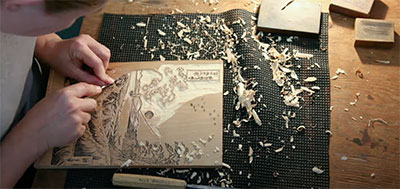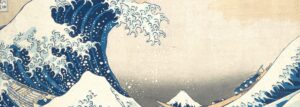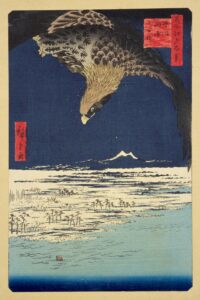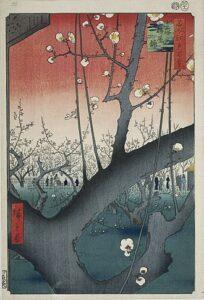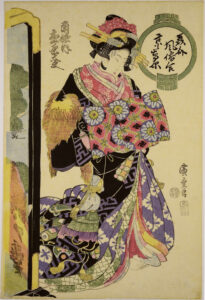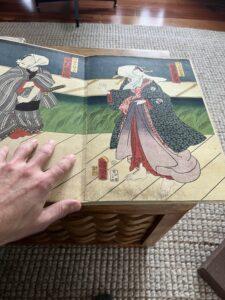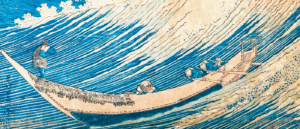Your Ultimate Guide to Identifying Collectible Japanese Ukiyo-e Pieces
Have you ever been to an art exhibition and wondered if those pieces on display were even real and from the original artist? I’m sure we all have at some point. Particularly when it comes to Japanese ukiyo-e or woodblock art, there have been many replicas and recreations of the original pieces ever since they surfaced in Europe after the Japonisme movement that commenced in 1858. So how do you tell if a woodblock print comes from its original artist in the 17th – 19th centuries and if you can add it to your list of collectibles? Well, don’t fret! You’ll find out today!
First and foremost, when you head out to find an artistic piece, and not just Japanese ukiyo-e, ask to see the piece unframed. Front and back views are preferable of the woodblock print so you can determine if there is bleed through. The reason for this is, that to determine whether a piece is original or not, you’ll either have to look at it very closely or you’ll have to touch it to get a feel of it. And you can’t do that through glass. Also, you will want to determine how the back looks, and that is impossible to see the back of a woodblock print through a frame!
Paper
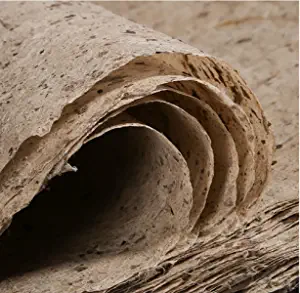
Now what are you actually looking for when touching or seeing a Japanese ukiyo-e art piece? First things first, check the back of your artpiece. There’s a very high chance that there is a bleed through on the back side of the paper if it’s an actual Japanese woodblock print. If not, the piece is likely a reproduction. Next comes the paper that is being used. Original Japanese woodblock prints usually use a thick fiber paper made from the inner bark of a mulberry tree, and these fibers will be visible in any small areas that are not too saturated with ink and pigment. Having a hard time picturing what this paper might feel like? Go to your nearest stationary store (or Amazon if you wish – you’ll find a link here) and go buy yourselves one to get an idea of what you’re looking for. So overall, the paper texture won’t seem even to you when you first touch it, unlike most reproductions which are likely to be glazed and smooth. In fact, some of the original prints might even have frayed edges if you look up close, due to how old they are. So you might want to check that too to make the process easier for yourself.
Publisher
Now that we have the paper type figured out, it’s probably wise to check for the seal or the stamp from the publisher of the artwork. This is usually either on the rear side of the image, in the margins, or even incorporated within the image in a subtle manner if the publisher wanted that. So your first red flag, beyond paper, would be if there’s no seal, stamp or if the margins have been cut off. Seeing the publishing stamps will also help you date the painting and assess whether the actual date and the quality of the printing era of the time actually match one another. Please note, this isn’t a fail-proof method for determining originality, since some woodblock prints have been trimmed to the print. That is, the margins have been trimmed out, and that is typically where the publisher seals are located in a wodoblock print.
Edition Numbers
Another thing worth noticing would be the edition numbers. Unlike western art pieces, these do not have any edition numbers or a number in their respective series even. The numbers given to any of the images inside a series are infact just based on the order that they came in. So if there’s any number on them referring to the edition, you’d want to walk away from it.
Block Cutting or Print Look
Now onto the block cutting aspects. The Japanese woodblock prints from the Edo Period usually had a ‘caligraphy’ kind of style, so the lines that appeared on the paper came off as brush strokes, unlike present day art, which has more uniform and sharp lines. This might be a reasonable measure, but there might be some pieces that are exceptions. So I’d say don’t dive too deep into this. It’s just one of the many things you could look at when in doubt.
Also color. Have you noticed that 20th century reproduction woodblock prints have a completely different color style than Edo originals? Edo originals generally have more subtlety and depth to the colors, where reprints and reproduction woodblock prints have more brightness and surface-level color. With time, you will be able to see the colors that represent an original woodblock versus a reproduction – a trained eye goes a long way and you can usually spot an original woodblock right away.
Last but not the least, if all else fails you and you’re unable to guage whether these are true prints, ask an expert for help, they’ll know what to do. And probably the next time you’re looking at a woodblock print to collect, you’ll be able to determine whether you’re looking at an original piece.
Do you need help determining if your Japanese woodblock print is authentic or a reproduction? Get in touch with us and submit pictures by clicking here.
References
Booth, Lisbeth. “How to Identify an Original Japanese Woodblock Print.” Our Pastimes, 4 May 2021, https://ourpastimes.com/how-to-identify-an-original-japanese-woodblock-print-12404259.html.
Kutcher, David. “How Do I Know This Antique Japanese Woodblock Print Is Real?” Moonlit Sea Prints, 1 Feb. 2022, https://moonlitseaprints.com/getting-started/japanese-woodblock-print-real/.

